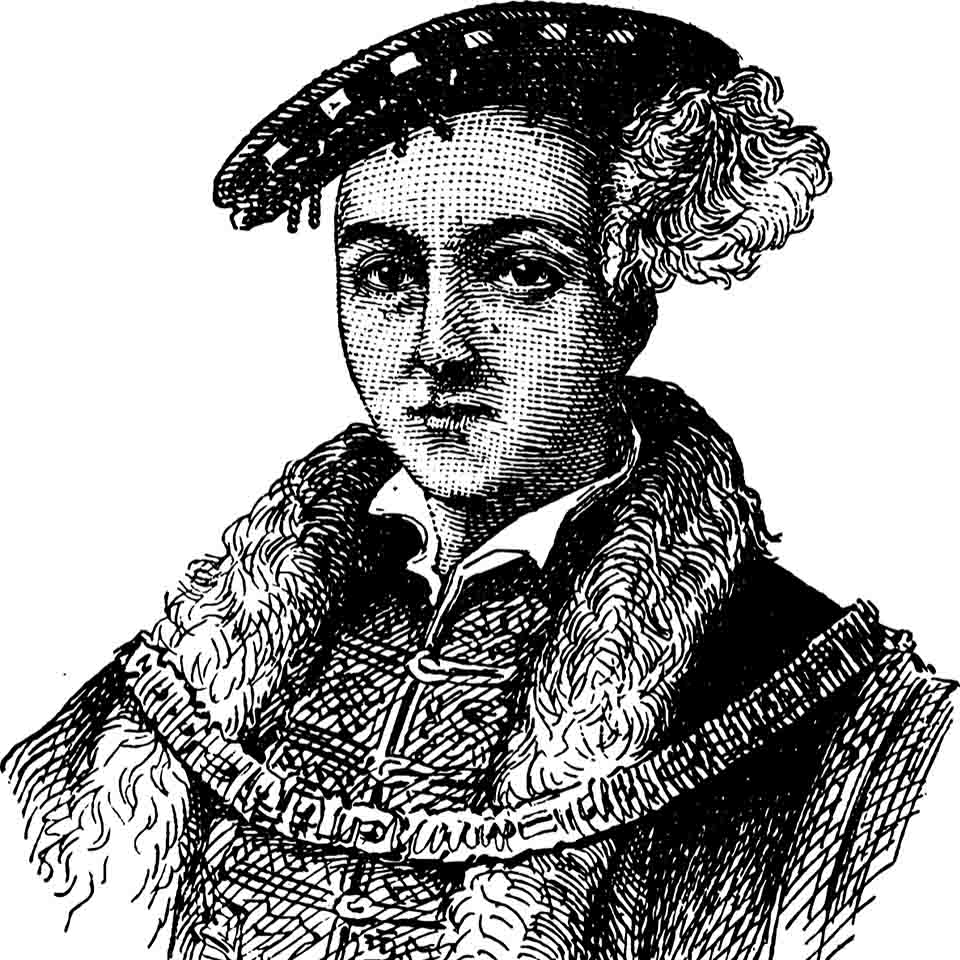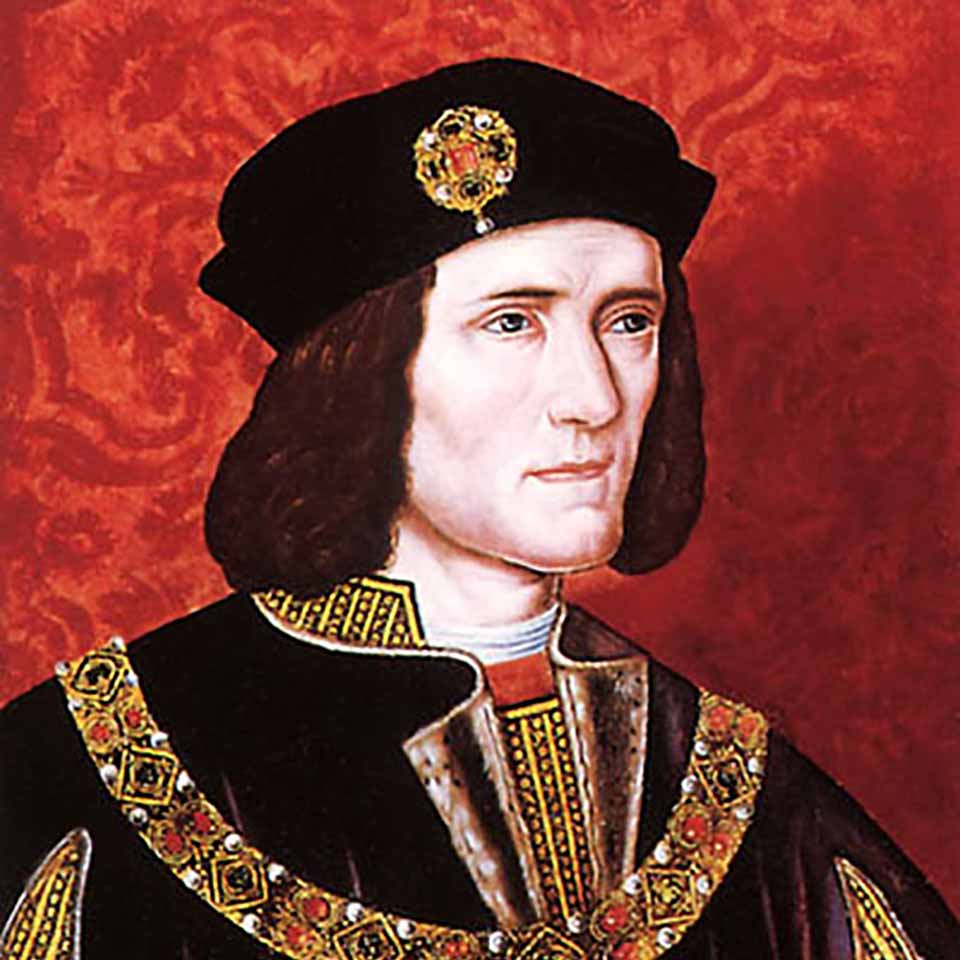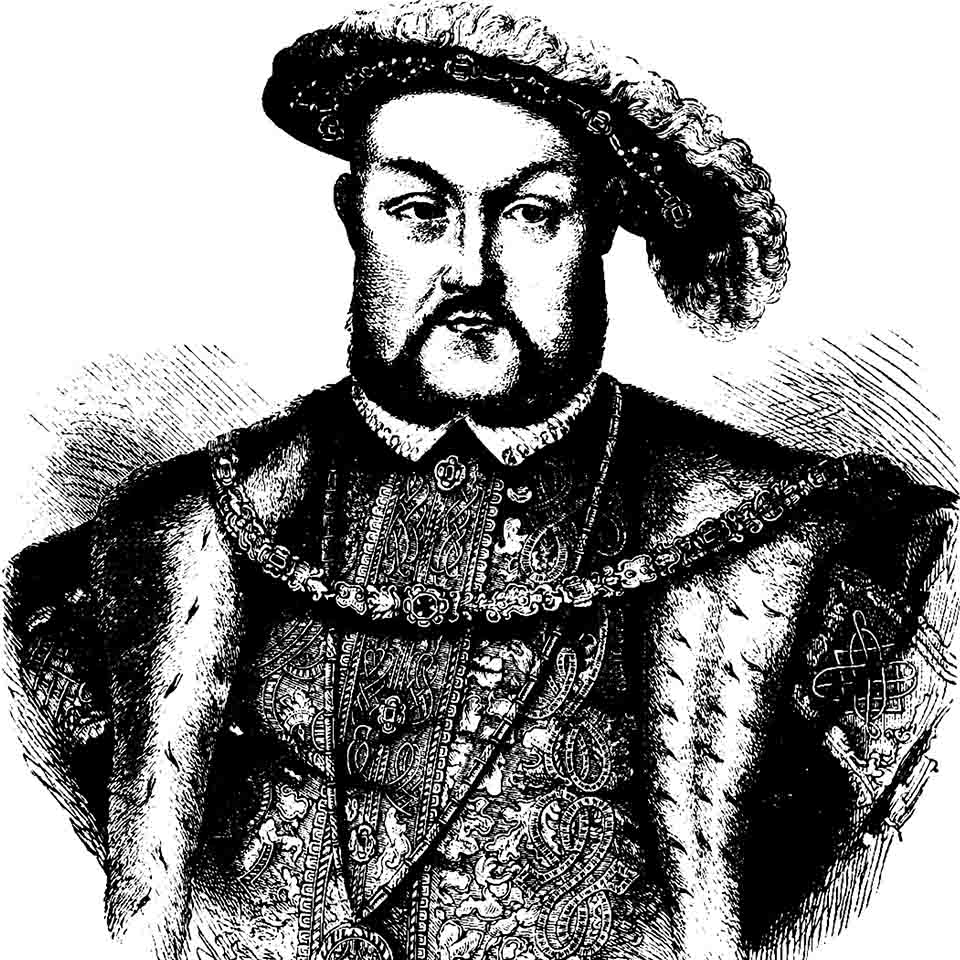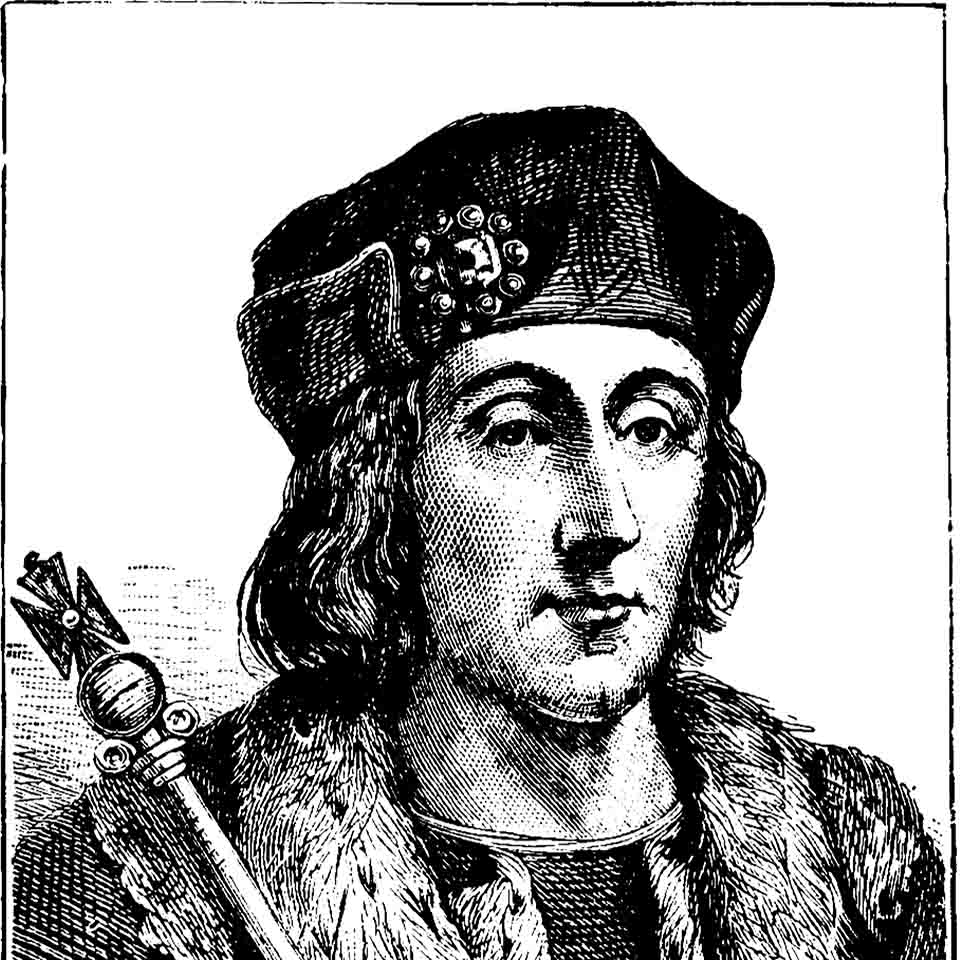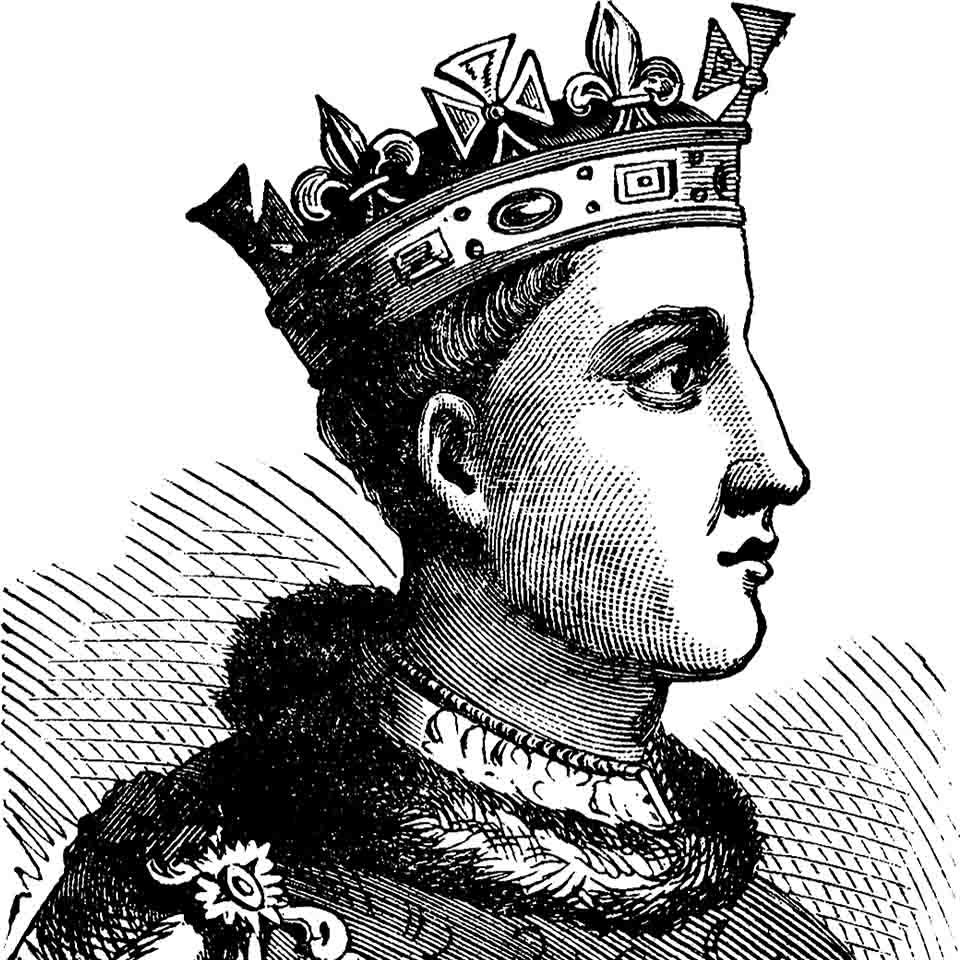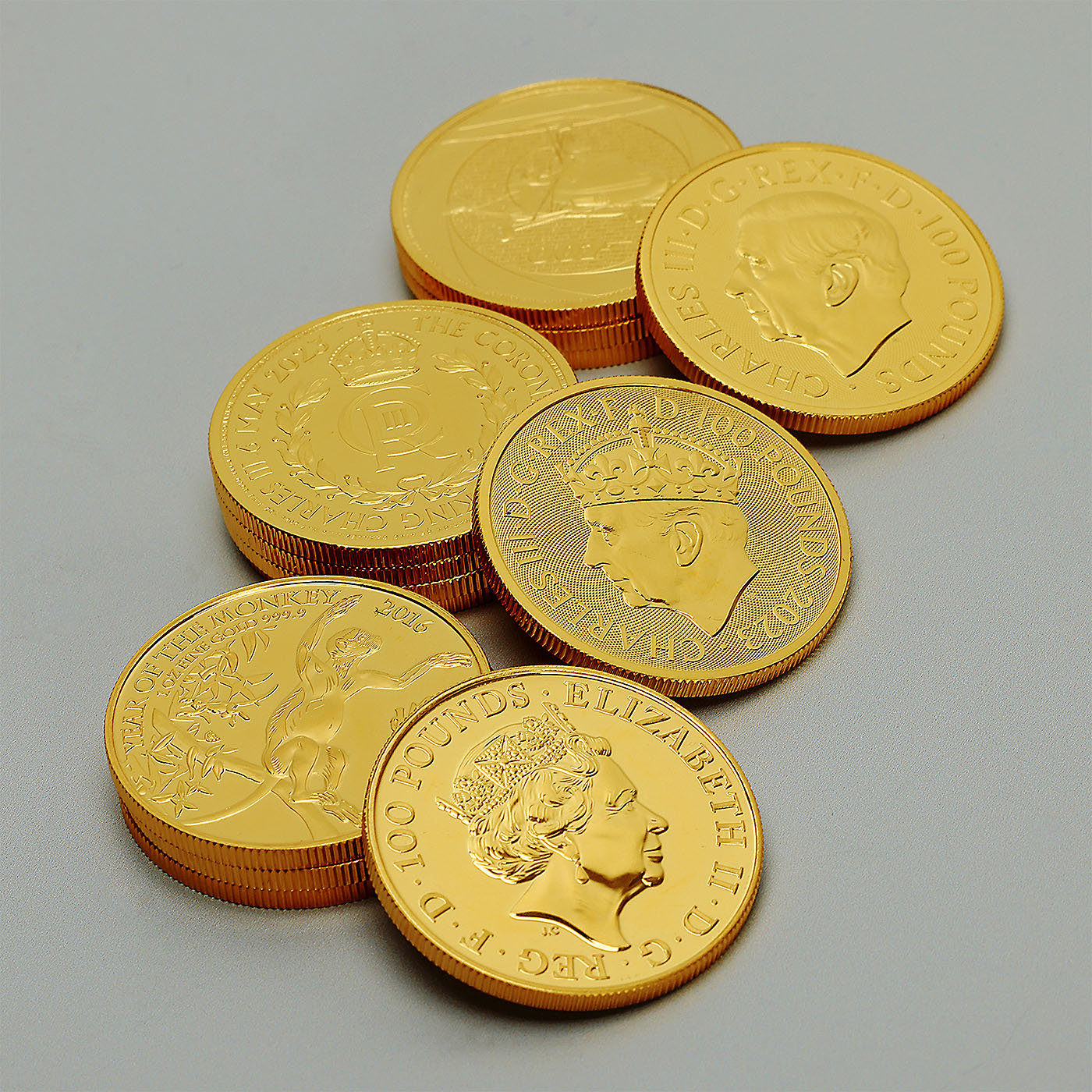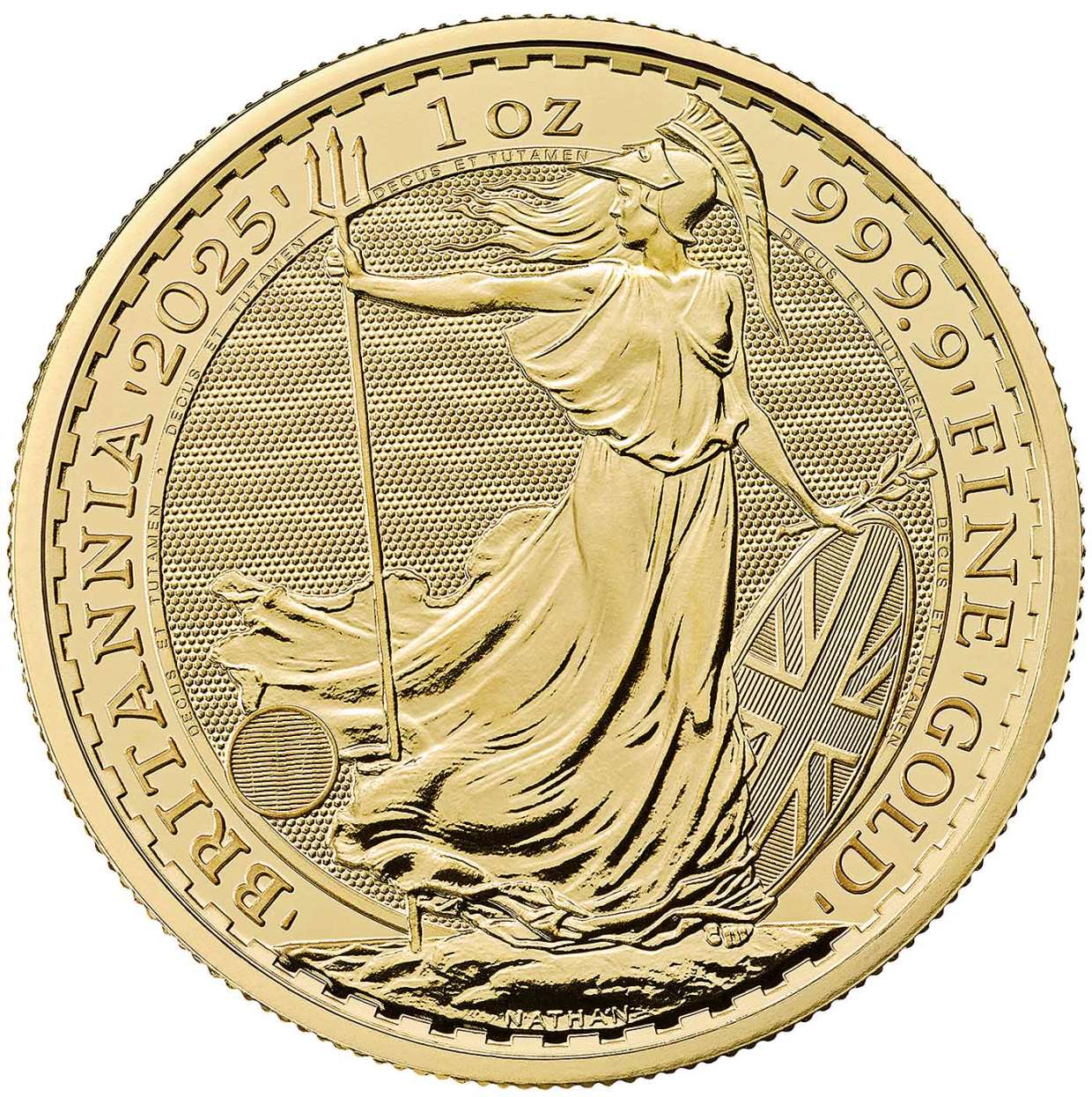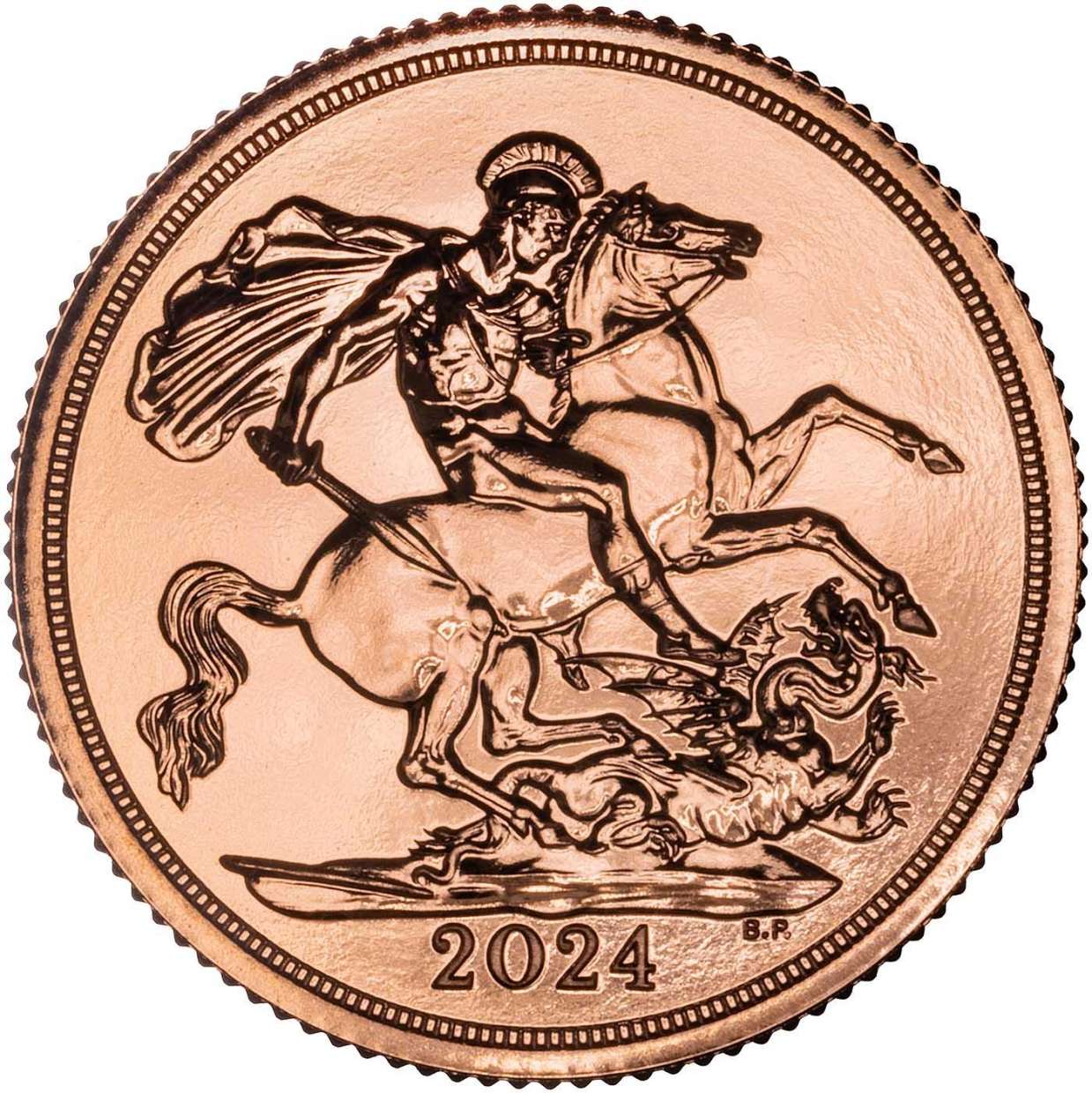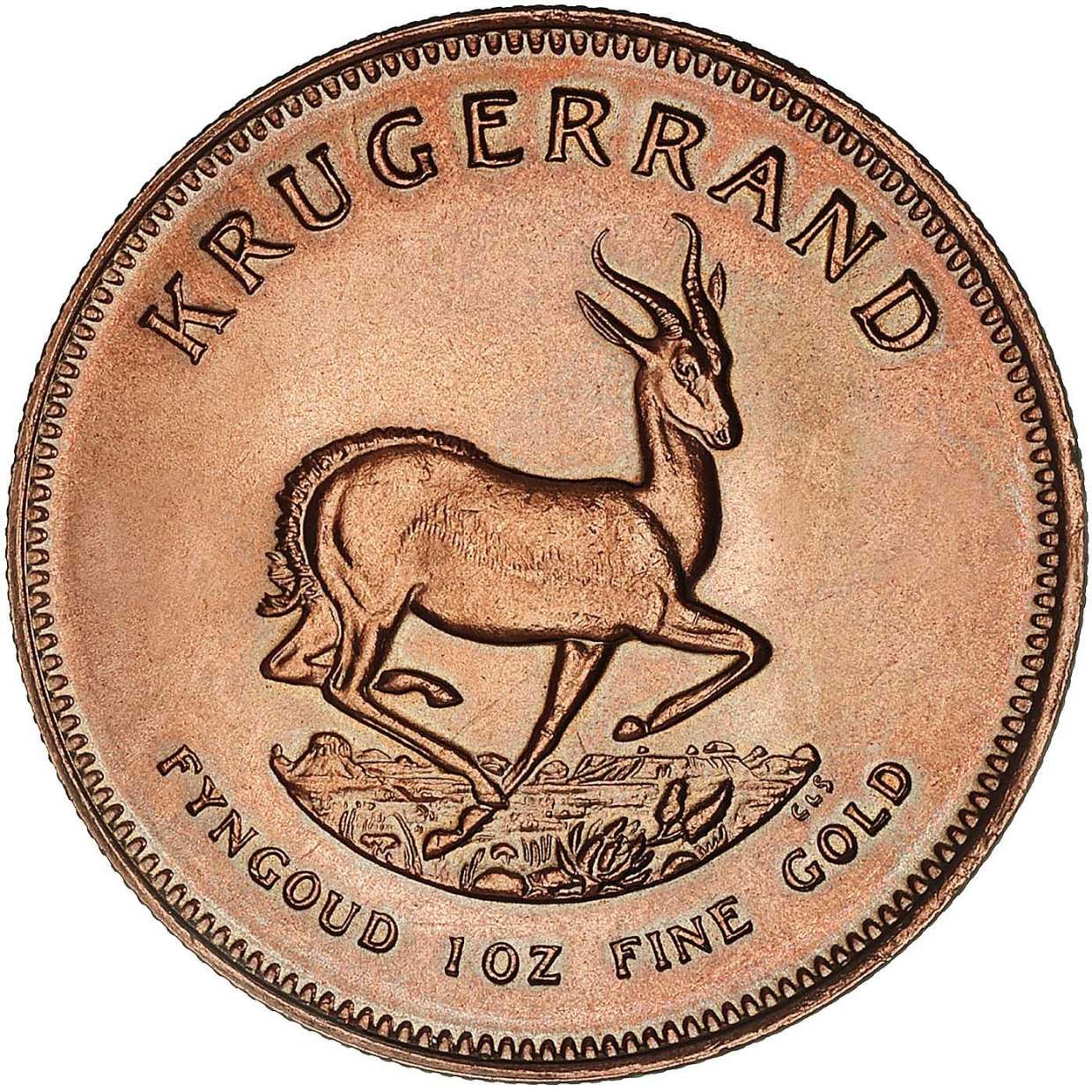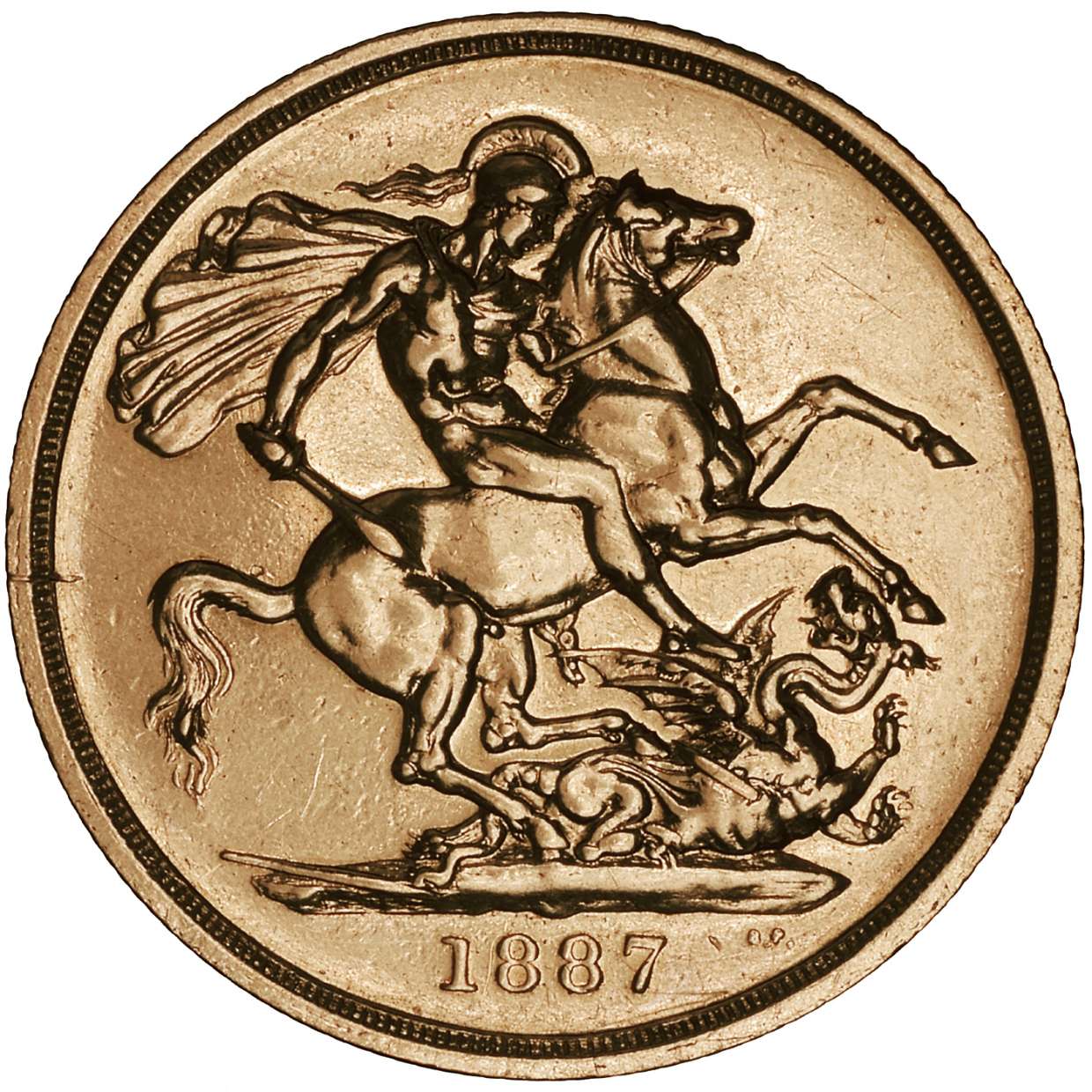King Henry VI (1422-1461) & (1470 -1471)
Synopsis
Henry VI was born in the year of his accession, 1422 to Henry V and Catherine of Valois. Henry VI's illustrious father died of dysentery whilst on campaign in France. Henry VI was not the ruthless and effective warrior king his father was, and his reign saw some of the bloodiest fighting of the dynastic struggle between the Houses of Lancaster and York, which would lead to the virtual annihilation of Henry's Lancaster house.
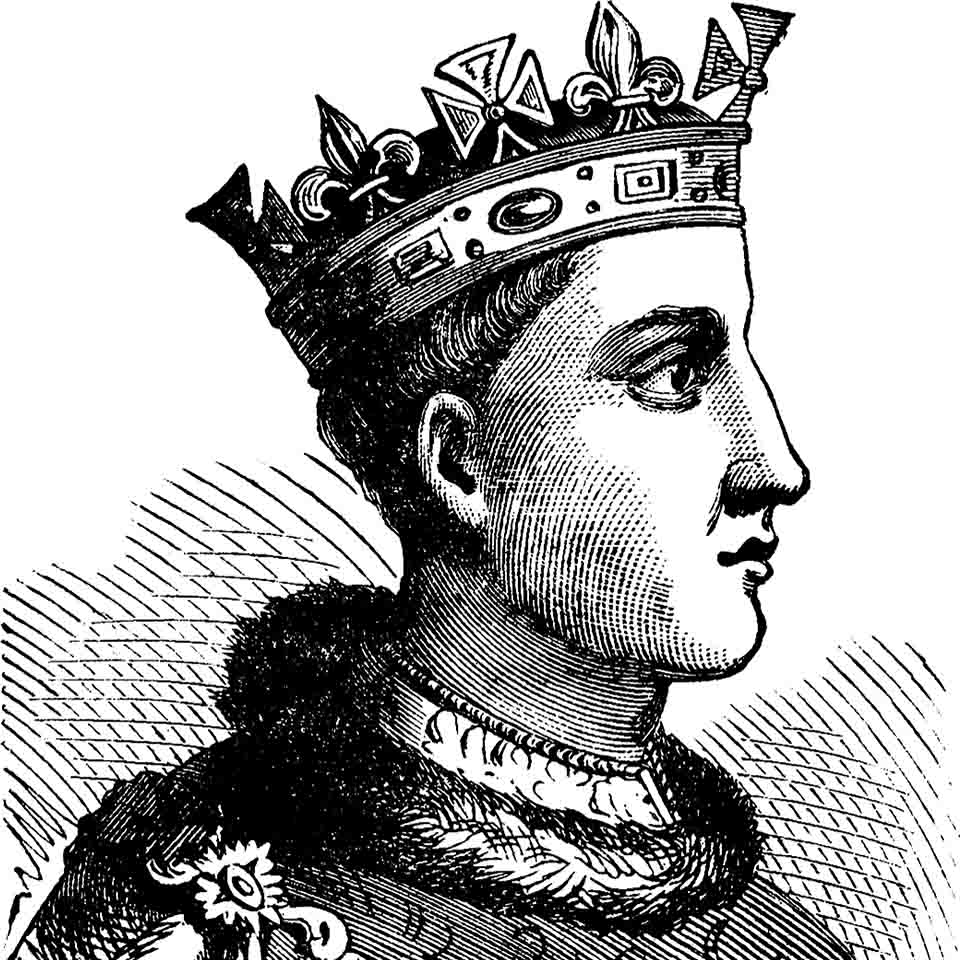
Child-King and the 100 Years War
Two of Henry V's brothers where appointed as regents in the infant King's name. The Senior Regent, The Duke of Bedford, remained abroad in France to continue the war to secure the French Throne on behalf of Henry VI, whilst the junior regent, The Duke of Gloucester, remained at home to govern England itself, with the aid of a regency council in which Henry VI's half-uncle, Bishop (later Cardinal) Henry Beaufort was also a key member.
However, without the focus and leadership of Henry V, the war against France stalled, and the fortunes of the English Crown started to reverse. In 1429, an English attempt to capture Orleans was heavily defeated upon the arrival of Joan of Arc to the Battlefield with a relief force, and thereafter English fortunes declined. The situation declined further still when the Duke of Bedford's wife, Anne of Burgundy, died in 1432 and the marital alliance between England and Burgundy (England's most important ally against France) was severed. Worse, Bedford decided to marry Jacquetta of Luxembourg in 1433, with the intention of strengthening ties with the Holy Roman Empire. However, this match gained very little real support from Germany, and its most important consequence was in alienating the Burgundies, who subsequently made their peace with France. In 1435, Bedford died whilst negotiating the Treaty of Arras, which was intended to result in a marriage between Henry VI and the daughter of Charles VII, the Valois claimant to the French throne, which would lead to a union of the Crowns. However, the Burgundies decided to ally themselves with France, leaving England, also at war with Scotland at the time, in a hopeless strategic position.
At this time, two factions started to emerge within the regency council, one led by Henry Beaufort, which was in favour of peace, and the other led the Duke of Gloucester, which was in favour of of continuing the war. Richard, Duke of York, who would later dispute the right to the throne with Henry VI, and who had replaced Bedford as the commander of English forces in France, was also hostile to the idea of making peace. When Henry came of age in 1437 and assumed control of government, he favoured the peace faction led by Beaufort.
Marriage to Margaret of Anjou
A truce between England and France was signed whilst negotiations for a more permanent peace settlement were carried out, which dragged on for several years. Eventually, it was decided that the Queen of France's niece, Margaret of Anjou would marry Henry VI (who was desperate to marry the beautiful Margaret), in return for the heavily one-sided Treaty of Tours which stipulated that in return for a 21 month ceasefire and marriage to Margaret in which Charles VII would not have to pay Henry VI a hefty dowry, as was customary, but would himself receive the English domains of Anjou and Maine. In addition, Henry VI also had to pay for the wedding himself. The wedding took place in 1445, and the terms of the treaty became public knowledge the following year, leading to predictable public outrage. The Earl of Suffolk, one of Henry VI's favourites, Beaufort's ally and the man who had negotiated the Treaty of Tours was the man chiefly blamed for this debacle, but Henry VI and his new Queen were determined to protect Suffolk from those screaming for his death or banishment. Henry's apparent failure to stand up to the French and refusal to sacrifice Suffolk for the sake of political expediency deepened divisions at the English court. Gloucester was arrested on suspicion of treason in 1448 and died in custody shortly afterwards. Richard, Duke of York was banished to Ireland as its governor. The humiliating terms of the marriage treaty were a major contributory factor to the resumption of hostilities between the houses of Lancaster and York. Queen Margaret however, proved to be a strong and determined woman, who in many ways possessed the strength her husband lacked to engage with the coming struggle between the Houses of Lancaster and York.
The End of one War, and the Beginning of Another
In 1450, disgruntlement with Henry's rule among the common people led to the short-lived Cade rebellion, in which several of the King's favourites were murdered before it was dispersed with false or at least only semi-true promises of pardons. 1450 also saw the return of Richard, Duke of York from Ireland to reclaim his place at court. In this he was fiercely opposed by the Queen, who felt a mutual sense of antagonism towards him.
In 1453 however, disaster befell Henry VI. The Battle of Castillon saw the loss of Bordeaux and any realistic hope of him ever gaining the French throne. This effectively brought the 100 Years War to an end. When news of the defeat reached the English court, Henry VI lapsed into the first major bought of insanity that was to plague him for the rest of his life. Despite the opposition of Henry VI's favourite, the Duke of Somerset, and the Queen (who was pregnant at the time), York, Henry's heir presumptive, was made protector of the realm for the duration of the King's period of insanity.
With Henry's eye off the ball, Richard quickly manoeuvred to improve his position. He appointed Richard Neville, Earl of Salisbury (and father of the powerful Earl of Warwick) as Chancellor, who had a feud with Somerset and the Percies. York now had powerful noble supporters on his side to support him, when Henry recovered his wits in 1454, he dismissed York and his supporters from their positions, who subsequently rose up in rebellion against the King. At first, York did not claim the throne in his own right (although he was no longer heir presumptive, as Henry's son, Edward was now heir apparent), but merely sought to regain his position at court so that he could rule England in Henry VI's name. York's supporters beat those of Henry VI at the Battle of St Albans, and captured him. Had Henry VI not had a son, York may have arranged for his death right there and then, however, had he done so now, Henry's son Edward would have been proclaimed king with Queen Margaret of Anjou effectively in charge as regent, and so York was content to rule again in Henry VI's name for the time being.
Yorkist Claim to the Throne
Although Henry VI remained in York's custody, further power struggles saw power see-sawing between the Queen and the Yorkist camp. Henry VI had by this point become so ill he was no longer capable of exercising power in his own right. York and his retainers first claimed the right of Richard to succeed the throne instead of Prince Edward, and then, in 1459 having been outlawed and his descendants disinherited by the Lancastrians led by Margaret in the name of Henry VI, York advanced his own claim to the throne. However, the following year, he was killed in the battle of Wakefield, upon which his own son, also called Edward, inherited his claim and his father's retainers and allies.
Henry VI Deposed, 1461
Henry was recovered from Yorkist custody after the Second Battle of St Albans in December 1460, during which the Yorkist Army was driven off. However, the victorious Lancastrian army was barred from entering London by fearful citizens, horrified at the prospect of Lancastrian northerners entering their city! (The Lancastrian army was battle-hardened from years of bitter fighting against the Scots and had a fearsome reputation for brutality against its defeated foes). Edward of York thus did not lose control of London and was able to recover quickly from this defeat and enter London, proclaiming himself as King Edward IV to cheers from the sympathetic inhabitants of the city. The two armies met at Towton in March the following year, and after bitter struggle (in which a total of 20,000 men from both sides were killed), the Army of York emerged victorious. Henry VI and his family subsequently fled to Scotland. His Queen and their son Edward moved on into exile in France, whilst Henry remained in Britain, moving back to the North of England, which remained in the hands of the Lancastrians, to lead (or at least remain present) in the fight against the Yorkists and reclaim the throne.
Recapture and Imprisonment
Henry remained at large in the North for four years, until in 1465 he was taken prisoner again in Lancashire. Again, the insane Henry was more useful alive to Edward IV and the Yorkist cause whilst his son lived, and so he was held prisoner in the Tower of London. Margaret of Anjou and Edward of Westminster, Prince of Wales were in exile and the Lancastrians had little hope of recovering the throne for Henry VI or his son unless some of Edward IV's powerful supporters could be persuaded to defect.
Tensions between Edward IV, his brother George, Duke of Clarence and the Earl of Warwick would lead to just such a turn of events however. Warwick had been annoyed by Edward's decision to marry Elizabeth Woodville, a commoner instead of his own choice of bride, as well as a general reluctance to allow Warwick to rule England in his name, for his part, Clarence had ambitions on his own. Having taken Edward IV into captivity in 1469 in a failed attempt to control him (a counter-rebellion soon forced his release) both Warwick and Clarence came to the conclusion that their ambitions would best be served by being in control of the insane and barely comprehending Henry VI than a wilful and independently minded Edward IV.
Short-Lived Second Reign, Deposition and Death
With the combined might of Clarence and Warwick against him, Edward IV was forced to flee London in 1470 and Henry VI was restored to the throne as a puppet. The renewed fortunes of the Lancastrian dynasty proved to be short lived however. Edward IV returned, seized custody of Henry VI once again and forced Warwick and Clarence to flee to France, where they entered into an alliance with Margaret of Anjou and agreed to restore the Lancaster dynasty. Warwick and Clarence returned to England to raise an army against Edward IV to retake London. However, the treacherous Clarence changed sides once again, and joined his brother to oppose Margaret and Warwick. On the day Margaret and her son Edward, Prince of Wales landed in England, Warwick was defeated and killed at the Battle of Warwick on the 14th of April 1471. A few weeks later, on the 4th of May, the Lancastrian Army met the Yorkists at Tewkesbury, where the Lancastrian Army was destroyed and Edward, Prince of Wales, heir to the Lancaster dynasty, was killed. Henry VI's son and only heir was now dead, and Edward IV returned in triumph to London. Shortly thereafter, Henry VI died, presumably murdered on the orders of Edward IV. Henry's wife Margaret, with her husband and son both dead, returned a broken woman into exile in France, were she died in 1482.
Legacy
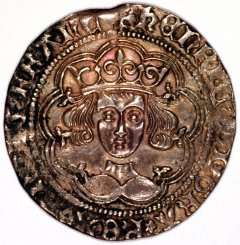 Henry VI, a king from his infancy, was viewed by most recorders as a saintly, if fatally weak king, dominated by regents, favourites and finally, his own wife from his very earliest days on the throne. He was wholly unsuited to the role in which he was born into, and worse, came into at the worst possible time. The devastation and slaughter inflicted by both sides during the struggle between the rival Plantagenet branches of Lancaster and York would see the Plantagenets, who had ruled England for centuries, virtually wiped out and replaced by the distant and somewhat dubious Tudor dynasty.
Henry VI, a king from his infancy, was viewed by most recorders as a saintly, if fatally weak king, dominated by regents, favourites and finally, his own wife from his very earliest days on the throne. He was wholly unsuited to the role in which he was born into, and worse, came into at the worst possible time. The devastation and slaughter inflicted by both sides during the struggle between the rival Plantagenet branches of Lancaster and York would see the Plantagenets, who had ruled England for centuries, virtually wiped out and replaced by the distant and somewhat dubious Tudor dynasty.
In terms of Henry VI's coinage, very few changes were made from previous reigns. However, it is interesting to note that during the Wars of the Roses, the coins of Henry VI sometimes turn up with the portrait deliberately vandalised by supporters of the rival Yorkist dynasty, and vice versa with the coins of Edward IV. Although this damage does unfortunately detract from the value of the coins, it does however make them somewhat more interesting to some given their historical context.
A history of Kings and Queens of England - Learn more about the Kings and Queens that reigned England throughout the different monarch dynasties (1066-2022).
Related Blog Articles
This guide and its content is copyright of Chard (1964) Ltd - © Chard (1964) Ltd 2024. All rights reserved. Any redistribution or reproduction of part or all of the contents in any form is prohibited.
We are not financial advisers and we would always recommend that you consult with one prior to making any investment decision.
You can read more about copyright or our advice disclaimer on these links.

